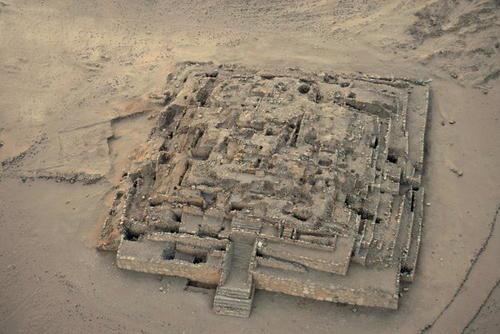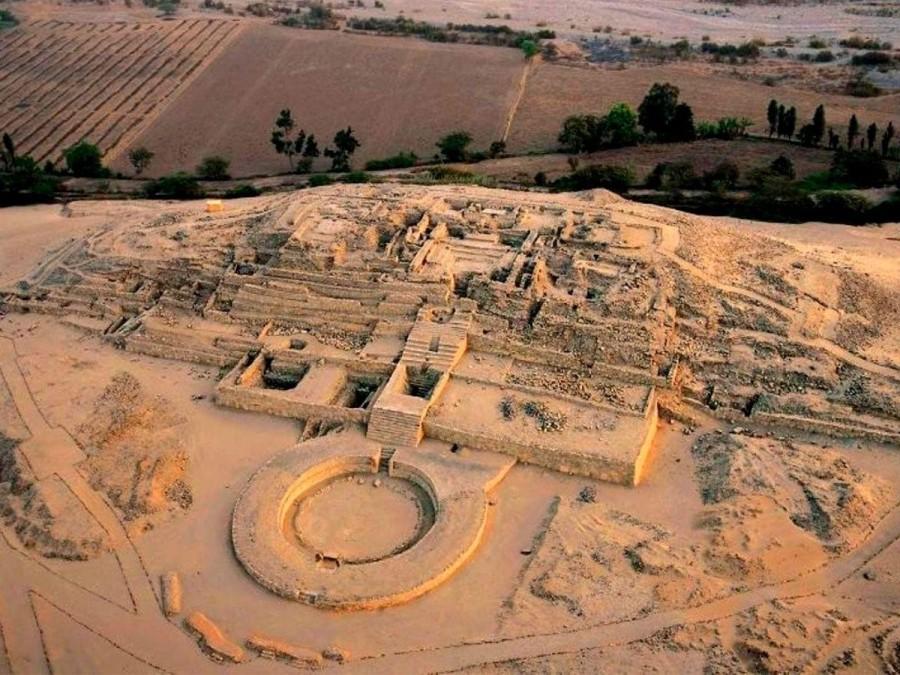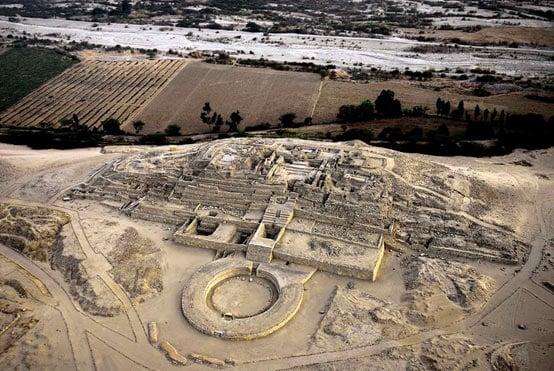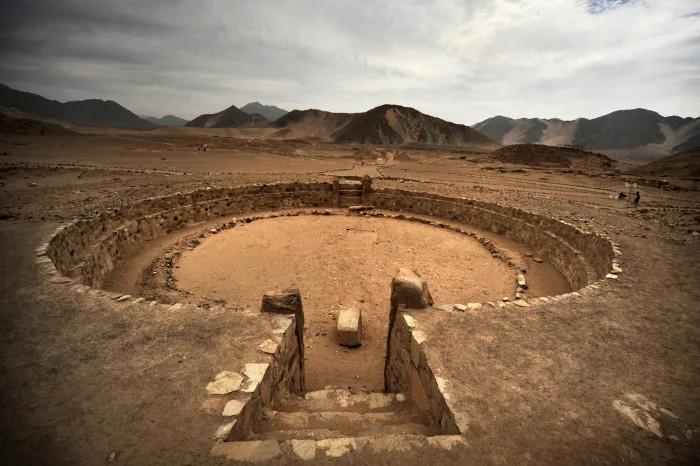
La Ciudad Sagrada de Caral en Perú. Con casi 5000 años de antigüedad, es la ciudad más antigua de América y es anterior incluso a las grandes pirámides de Egipto. Incluye 6 pirámides, la mayor de las cuales mide 150×160 metros, 2 plazas ceremoniales hundidas, distritos residenciales y un sistema de riego.

En el campo de la historia antigua se enseña ampliamente que Mesopotamia, Egipto, China y la India dieron origen a las primeras civilizaciones de la humanidad. Sin embargo, pocos son conscientes de que al mismo tiempo, y en algunos casos antes de que surgieran algunas de estas sociedades, había surgido otra gran civilización: la civilización Norte Chico de Supe, Perú, la primera civilización conocida de América. Su capital era la Ciudad Sagrada de Caral, una metrópolis de 5.000 años de antigüedad con prácticas agrícolas complejas, una rica cultura y una arquitectura monumental, que incluye seis grandes estructuras piramidales, montículos de plataformas de piedra y tierra, templos, anfiteatro, plazas circulares hundidas y áreas residenciales.

The Supe Valley, which lies 200 miles north of Lima on the Peruvian Pacific coast, was surveyed in 1905 by the German archaeologist Max Uhle, who revealed the first archaeological discoveries in the area. However, it was not until several decades later that full-scale excavations took place, revealing the tip of a very large iceberg. In the 1970s, archaeologists discovered that the hills originally identified as natural formations were actually stepped pyramids, and by the 1990s the full extent of the great city of Caral had emerged. But another great surprise was yet to come – in the year 2000, radiocarbon dating carried out on reed carrying bags found at the site revealed that Caral dated back to the Late Archaic period beginning around 3,000 BC. Caral had now provided the most extensive evidence of an early complex society in the Americas.

The remains of the Sacred City of Caral, Peru. Image source .
Caral is one of 18 settlements identified in the Supe valley, covering an area of around 65 hectares. It is situated on a dry desert terrace overlooking the lush valley of the Supe River. Exceptionally well-preserved, the site is impressive in terms of its design and the complexity of its architecture. The city’s plan and some of its features, including pyramidal structures and residences of the elite, show clear evidence of ceremonial functions, signifying a powerful religious ideology.

The centre of the Caral complex consists of a central public area with six large pyramids (platform mounds) arranged around a huge plaza. The largest of the mounds, located in a dominating position within the urban plan of Caral, is 60 feet high and measures 450 x 500 feet at the base, covering an area nearly the size of four football fields. From the top of the great pyramid, the rulers of Caral would have been able to monitor the entire city. A 29-foot wide staircase opens into a series of small rooms, which include an atrium and a sacred altar. The altar room has a small hole in the floor, in which it appears that offerings were once burned.

Remains of the Great Pyramid of Caral. Image source: Christopher Kleihege / UNESCO
The public architecture has stairs, rooms, courtyards, an amphitheatre, and three sunken plazas. Accommodation seems to have consisted of large rooms atop the pyramids for the elite, ground-level complexes for craftsmen, and small outlying dwellings for workers. In total, it is estimated that Caral was home to a population of about 3,000 people. Researchers believe the model of the city was used by many civilizations that came after the Norte Chico.
In 2001, the Sacred City of Caral in Supe was inscribed on UNESCO’s World Heritage List. UNESCO writes:
“La Ciudad Sagrada de Caral-Supe refleja el ascenso de la civilización en América. Como estado sociopolítico completamente desarrollado, es notable por su complejidad y su impacto en los asentamientos en desarrollo a lo largo del Valle de Supe y más allá… El diseño tanto de los componentes arquitectónicos como espaciales de la ciudad es magistral, y los montículos de plataforma monumentales y los montículos empotrados Los tribunales circulares son expresiones poderosas e influyentes de un Estado consolidado”.





